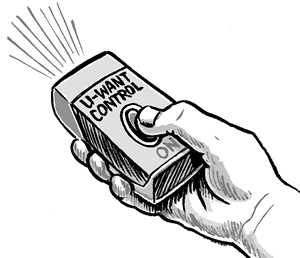This blog is for all the cable haters out there of which I am not one. I love TV.

I fondly recall our suburban Long Island home getting cable installed circa 1980. In particular, the remote that was wired to our 19-inch TV, a common display size in its day. You might recall needing to depress the mechanical buttons on the remote or toggle the A/B switcher, although there was nothing worth watching on B. That summer our home got access to movies through HBO, music videos from MTV and all sorts of new programming that fundamentally changed our family’s TV habits. While this disrupted the business model for broadcast TV, these channels became a part of the fold, were on the cable TV guide and aired numerous favorites such as The Wonder Years and Roseanne. Not long ago the introduction of DVR drove viewing habits to shift again. My first exposure to DVR was watching a Mets game, starting the game a bit late and skipping the commercials. DVR introduced time-shifted viewing which ultimately was monetized through C3 ratings measurement.
Broadband Internet ubiquity is shortening the gap between innovations and television is not immune. There is a belief among some that streaming services such as Netflix are usurping the pay TV industry. And to an extent, they are not wrong; or at least not entirely. You’d be living in a void if you were to argue that viewing habits aren’t changing again. In a recent interview, Cablevision CEO James Dolan suggested there will come a time where transmission of television will be through the Internet. For operators such as Cablevision, selling higher margin broadband may be what makes up for the eventual loss of subscribers opting for large TV channel bundles. Indeed, 46 million American households have a TV connected to the Internet that offers apps such as Hulu, HBO NOW, CBS All Access, and Sling TV. New services such as these are garnering a share of American’s TV time.
But the TV industry has a history of innovation, adaptation and an understanding of how to stay relevant in a changing competitive world. Most recently, this is apparent in the list of brands cited in the previous paragraph. These services are all examples of networks or operators placing a bet on viewers shifting habits. Hulu, a streaming company owned in part by Comcast, FOX, and Disney, grew its subscriber base 50 percent in the past year, and HBO launched an app that does not require you to subscribe to a pay TV channel bundle. CBS All Access is an example of broadcast TV evolving with the times again. And Sling TV, a product of DISH, is a straight-up broadband cable offering. While TV industry newcomers, if we can even call them that anymore, Netflix and Amazon Prime, are attracting the attention of viewers, it is largely through network programming that they license for distribution. In fact, numerous shows have developed audiences through binge viewing on streaming services only to achieve record broadcast ratings in their final season.
So perhaps streaming is not eating the shorts off cable, but rather stimulating a major fundamental shift in the business model. Darwinism will indeed play a role, there will be winners and others will lose. But, this is not a story of cable versus streaming as the programming world is too interwoven for it to be so simple.
Will our kids’ childhood TV memories be getting Roku installed or setting up their very own Netflix profiles?


